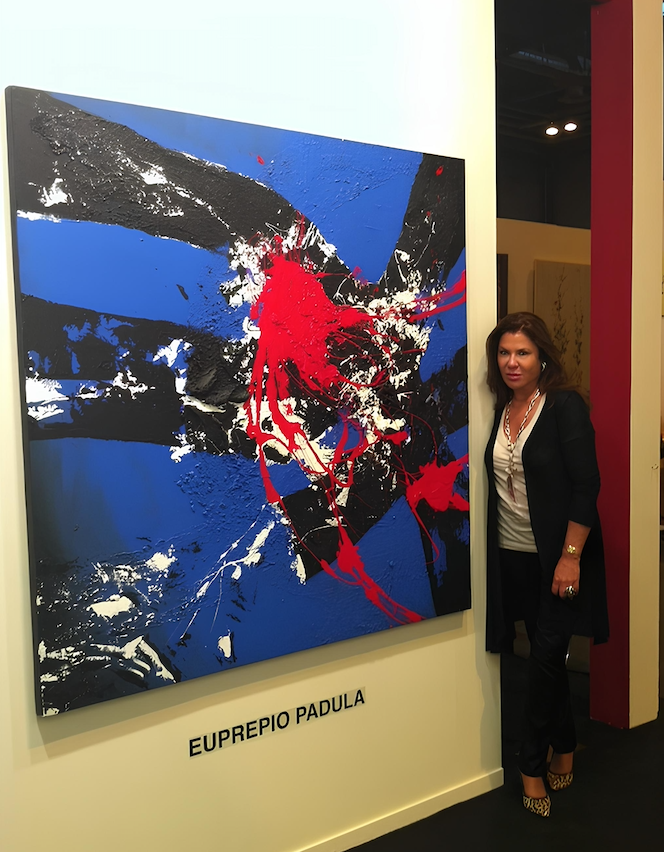
Soraya Cartategui established her first eponymous gallery, Soraya Cartategui Fine Art, in 1994 in New York’s Chelsea neighborhood, showcasing a range of conceptual and performance art by emerging artists. By the late 1990s, however, Cartategui took a dramatically different direction and returned to one of her first passions: Flemish and Dutch antique painting, and works by the Old Masters. While the gallery still maintains a secondary space in New York, the main operation is in Madrid, which at the time made it the first to bring this genre of art to the Spanish city. Since 2006, however, Cartategui has struck a balance between the contemporary and the antique, presenting both to collectors locally and internationally through participation in numerous fairs annually—from Miami to New York, Brussels to Madrid, and more.
We reached out to Cartategui to learn more about her journey as a gallerist.
Soraya Cartategui. Photo: José Guerrero.
While your first gallery in New York initially showcased emerging talent and performance art, the focus ultimately shifted to Dutch and Flemish Old Master paintings. At that point, what was your experience with this period of art, and what about this period drew your attention?
Old Masters have always been my passion and what I studied in depth during my years in college. I am from Madrid, and therefore always had access to some of the most important Dutch and Flemish paintings at the Prado Museum.
This period is completely fascinating and requires a lot of knowledge and studying in order to be able to identify the artists. A great number of artists did not sign their works, and many collaborated between each other. I love the variety of themes from still lives, portraits, landscapes, and seascapes. They are painted magnificently and most importantly conserved in such an incredible way.
What inspired the further evolution to include Modern and contemporary art in 2006?
As I mentioned, despite being specialized in Old Masters my career began organically with Latin American Contemporary artists. I had the experience of dealing with this type of art and the market for contemporary art was so much more active therefore I decided to diversify and also start exhibiting at contemporary art fairs.
Fernando Daza, Diptych Forms (2024) Courtesy of Soraya Cartategui FIne Art.
How would you describe the ethos or mission of Soraya Cartategui Fine Art?
The mission for Soraya Cartategui Fine Art was first to introduce Dutch 16th- and 17th- century paintings in the Spanish market. It because the first gallery specializing in this type of artwork, and it was able to accomplish this by providing very well researched and documented artworks that were not otherwise available to the market.
Currently the mission is to showcase new emerging talent that is diverse and brings something new to her collectors.
With locations in both Madrid and New York, what do you see as one of the most significant differences between the two art scenes?
The clients are very diverse. New York clients are more impulsive and less conservative when it comes to making decisions while Madrid clients take more time and tend to have a less risky taste in art.
Having worked with Dutch and Flemish art for some time, have you noticed any changes or shifts in the market that you find particularly exciting or intriguing?
The art market has its cycles and trends. The Old Master market is gradually picking up and collectors show a lot of interest in new undiscovered works. I’ve also found it very interesting how there are more and more contemporary artists who are inspired by Old Masters and try to replicate the style and themes in their artworks.
Installation view of Ruben Abstract, Underwater 6000 (2024). Courtesy of Soraya Carategui Fine Art.
Looking back at your career and the activities of the gallery to date, do you have any favorite works that you still think about or perhaps most memorable moments (e.g., placing a work) that stand out to you?
Some of my favorite memories are from curating public and private exhibitions in museums and art foundations featuring artworks I had previously sold. As a gallerist, I get very attached to the paintings; I carefully find, investigate, write about, and document them, and therefore being able to see them again in beautiful venues gives me lots of happiness.
Looking to the future, is there any gallery news or events on the horizon that you can share with us?
We are very excited to participate in Estampa Contemporary Art Fair now in October and at Just Mad during Madrid’s international art week.
Explore Soraya Cartategui Fine Art here.